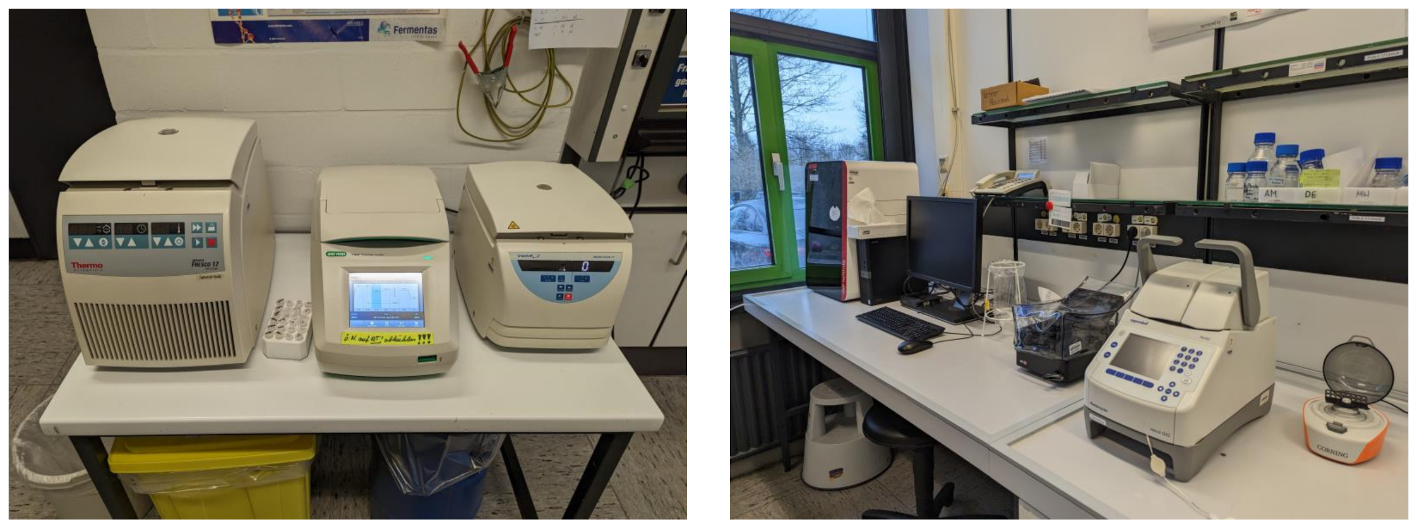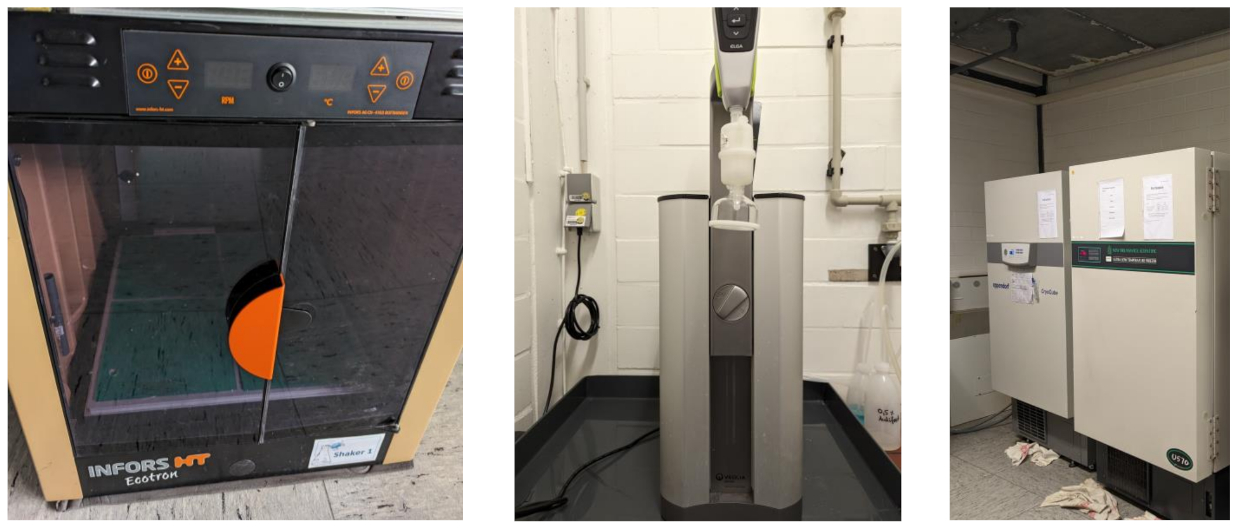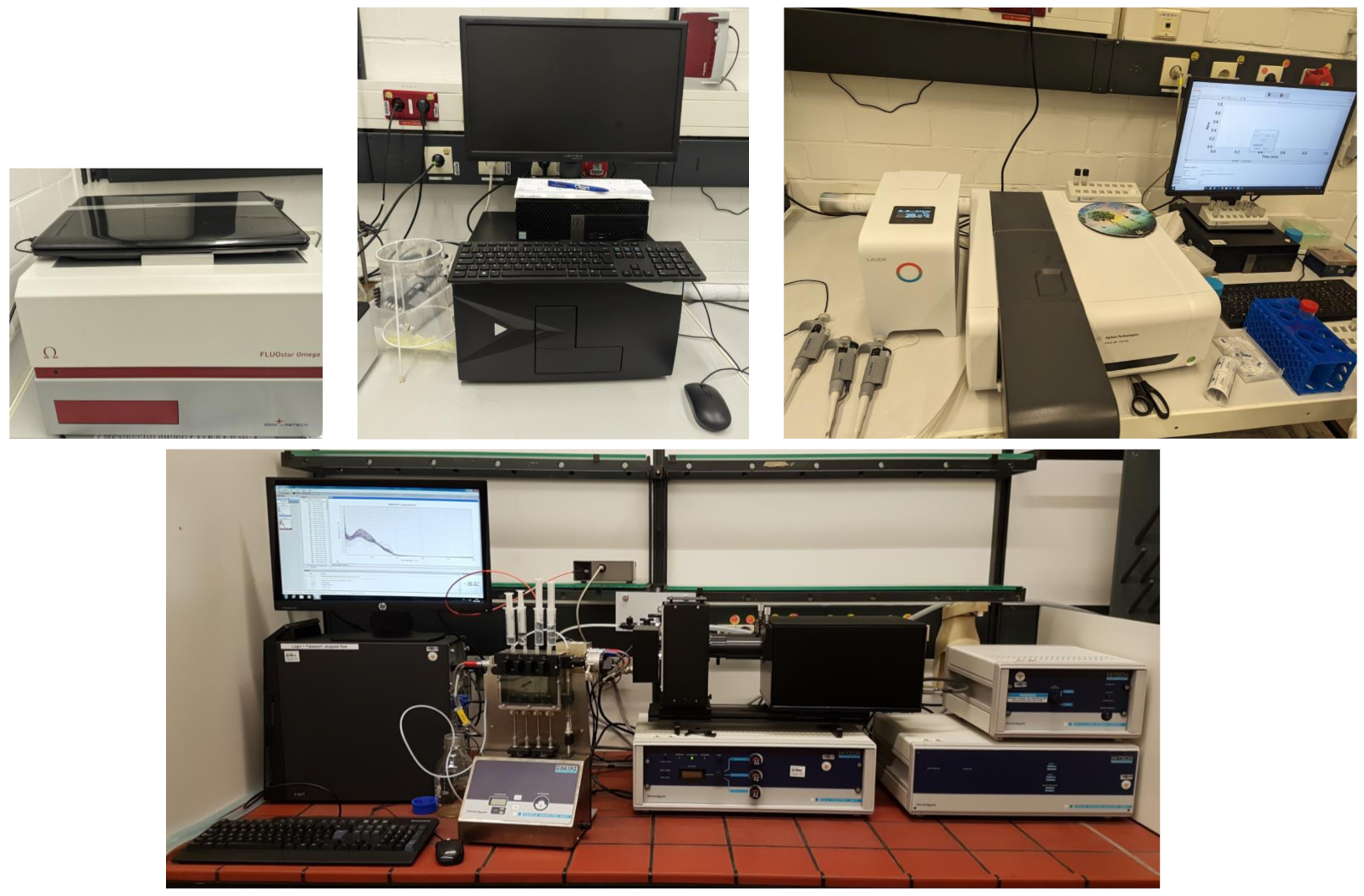Genetic work is essential for enzyme production and optimization. Therefore, in addition to two thermocyclers (Biorad and Thermo Scientic), a modern gel documentation system from Jena Analytic is available. The system is complemented by various gel chambers and a NanoDrop from Implen for the precise determination of DNA.

For the cultivation of microorganisms, a 37°C, a 30°C and a 23°C incubation room are available, which are equipped with shakers for flasks and rollers for test tubes to improve the oxygen supply to the cells. In addition, individual conditions can be realized in two Inforce shakers. An ultrapure water plant is also available for the production of qualitative media.

A total of three fermenters (2x 5 L and once 10 L) are available for the efficient production of biomass. Optimal growth conditions are ensured by adjustable air supply, automatic pH control and nutrient pumps. In combination with powerful centrifuges, the system allows easy production of large amounts of recombinant enzyme.

Purification of recombinantly produced enzyme is performed with one of the three available FPLC systems using affinity and size exclusion chromatography. Protein detection is performed at 280 nm or the specific absorbance of the cofactor in a range up to 800 nm. Samples are automatically fractionated and subsequent re-buffering is performed by re-chromatography or dialysis.

Although enzymatic reactions are typically performed at scales of 100 to 1000 uL, enzyme reactors allow scaling up to 250 mL. Systems ranging from classic stirred bed reactors to flow reactors to new systems such as SpinChem's rotating bed reactors are used here to ensure optimal performance for every enzyme system.
Many enzymes convert substrates (e.g. azo dyes) or cosubstrates (e.g. NAD(P)H) that have UV/vis absorption or carry colored cofactors themselves (e.g. FAD or iron). Two temperature-controlled Agilent Cary 60 spectrophotometers are available for measuring enzyme reactions and kinetics. Deeper insights into enzymatic mechanisms are provided by a HI-TECH stopped-flow system, which allows observation of individual reaction steps with a time-resolution of less than one millisecond.

For the analysis of organic substances without UV/vis absorption, two GC systems from Shimadzu are available, which are equipped with a flame ionization detector (FID) and an MS detector, respectively. Hydrogen is generated by a separate generator. Chiral columns allow the precise determination of preferred enantiomers, while an integrated database allows the identification of new reaction products based on the characteristic mass spectrum.

Since most substrates for enzymatic reactions are water-soluble, our analytical focus is on reverse-phase liquid chromatography. Here we have a total of four instruments from the manufacturers Thermo Scientific (2x), Agilent and Shimadzu, which are equipped with UV, vis, fluorescence and MS detectors, respectively. The possibility to measure 96-well plates directly ensures high throughput rates.

Oxygen plays a critical role in many enzymatic reactions. A better understanding of oxygen levels during reactions can be achieved by direct measurement using oxygen meters (HansaTech and Strathkelvin Instruments). This is possible both in an isolated reaction cell and as a flow-through system.
For parallelization of many reaction mixtures, various thermoshakers allow reaction in Eppendorf tubes, glass vials or 96-well plates. Analysis is performed either by HPLC or photometrically in one of two plate readers (Omega and Tecan). To ensure high throughput, inserts for centrifuges allow a continuous workflow in 96-well plate format.
A fully equipped chemistry laboratory allows non-enzymatic synthesis of substances. Work under protective atmosphere using Schlenk techniques is possible as well as classical organic chemistry approaches. Additional equipment includes a rotary evaporator, a Speed Vac and a Lyophile for compound isolation.